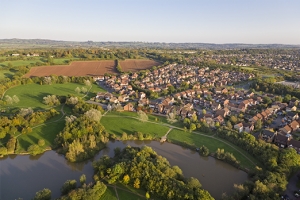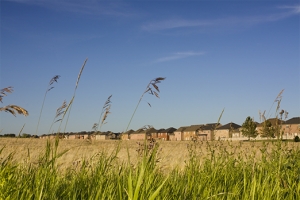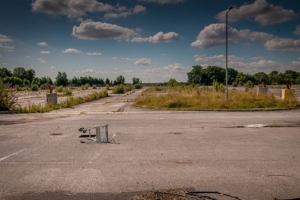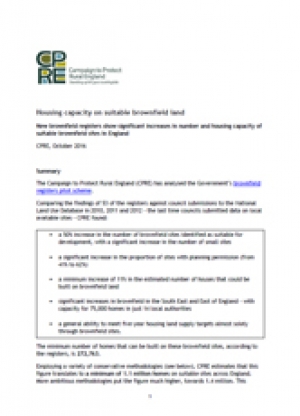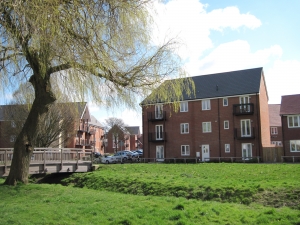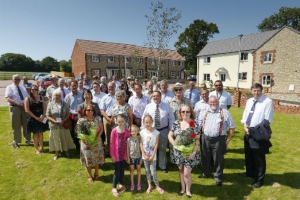Matt Thomson shares his ‘to do’ list for the revised national planning rules.
The Government keeps reminding us it has a ‘to do list’ for housing - we must:
- deliver the homes the nation needs
- protect the countryside
- and leave the environment in better condition than we found it in.
But sadly, like many of our own ‘to do lists’, it’s not managing to tick off any of those crucial elements. Next week, however, they might finally get to put a tick against an item on the Ministry of Housing, Communities and Local Government's (MHCLG) list if, as widely predicted, they publish the long-awaited redraft of the National Planning Policy Framework (NPPF) – the single document that sets out the government’s policies for how planning should work.
In the most basic sense, the NPPF’s job should be to encourage and enable ‘good development’ and restrict ‘bad development’. The underlying rhetoric from the Government must shift away from pushing homes to be built at whatever cost and towards an approach which balances the need for new developments with other needs and interests.
There is a housing crisis that must be addressed, but the solutions do not need to be at the expense of the countryside and its communities.
However, while the wording of the current NPPF can reasonably be interpreted as having that intention at heart, some of its wording is loose and is so open to interpretation - or conflicts with other government policy and statements - that these principles don’t fully coincide with reality as most people recognise it.
Are developments genuinely the ‘right homes’- that is, what communities need - rather than what sells fastest on the property market? In other words, are they in the right places, making good use of land? And in whose benefit are decisions made and who is in control of making them: communities, government or developers?
CPRE will be judging the new draft NPPF on how well it delivers on key countryside issues. We’ve helpfully created our own ‘to do’ list for the NPPF itself:
- Deliver the homes the nation needs rather than just follow market demand - focusing on increasing affordable housing provision and reforming the viability system stacked in developers’ favour.
- Maintain Green Belt policy and the protection of our National Parks and AONBs – respecting needed constraints on development.
- Embed a brownfield-first policy - prioritising the construction of over a million homes on sites already identified as suitable for housing development.
- Empower communities to manage the type and scale of development in their areas.
- Embed an understanding of what genuine sustainable development means and make sure that developments are permitted, and restricted, on this basis.
The NPPF is a critically important document that has a huge bearing on our countryside. It governs how communities are able to engage with proposals for development in their areas – to demand the development that they need, and to protect the open spaces, landscapes and places of cultural and environmental interest that they cherish and add such richness to their lives.
We must make sure the government gets it right. We’re really looking forward to ticking some items off our NPPF list and we’ll be poring over the draft over the coming months and letting you know how you can help hold government to account on its own promises.
Land-banking. A phrase that a few years ago would have been met with a quizzical, confused look is now on the lips of many housing commentators and policy-makers. It’s also shaping up to be the next big battle in the effort to tackle Britain’s housing crisis and prevent the unnecessary loss of countryside.
The government is waking up to the idea that the country’s biggest housebuilders are hoarding land. Secretary of State Sajid Javid wants Westminster to play a ‘more active, muscular role’ in tackling land-banking, and Tory grandee Sir Oliver Letwin MP is leading a review into the topic, to which I submitted evidence on behalf of the Campaign to Protect Rural England (CPRE).
So far, it has been Britain’s volume housing developers that have proved the most ‘muscular’. As reported in the FT last month, we’ve compiled evidence that shows the UK’s ten biggest housebuilders have increased the number of plots with planning permission they hold by a fifth in the past ten years, by two-fifths since 1998. Meanwhile, the number of homes completed each year has fallen by 13%. Alongside this, industry profits have skyrocketed, and the loss of our countryside accelerated.
This represents the tip of the iceberg; these figures only show plots with planning permission – we know that the developers hold wider, ‘strategic’ banks of land that do not yet have planning permission, the size of which is difficult to establish.

Developers maintain that they need a pipeline of land to maintain their profitability and ride out market volatility. This is true to some extent, but they restrict this pipeline at will, drip-feeding homes into the market at a pace that best serves their profits. Their swelling holdings are exacerbating the crisis of supply and affordability that has seen millennials pushed increasingly far away from owning their own home.
The hoarding of land also has a pernicious effect on our countryside. The dominance of the biggest developers means the market is increasingly geared towards the types of development they want, not what communities need. They are free to cherry-pick land that will make them the most proft - large tracts of undeveloped land carved out of the beautiful patchwork of English countryside we know and love.
This land is cheapest for them to develop, and allows them to focus on building sprawling estates of large houses at the expense of smaller, more affordable homes: 26% of all new houses and flats were three-bed in 2007; 19% were four-bed or more. By 2015 they were 34% and 29% respectively.
Local authorities, housing associations and other smaller builders are often prepared to build more quickly, are better placed to provide affordable housing, or redevelop existing brownfield sites rather than our green spaces, and they need to play a greater role. But, they are being squeezed out as the biggest builders consolidate their grip on the market; the volume builders now have 59% market share, up from 31% in 2007.
This is taking place in the context of the government’s drive to relax planning rules and release more of our countryside for development, and constant calls from developers to relax the rules further. However, despite this relaxation, the supply of housing has not kept pace with the number of planning permissions granted, demonstrating that the planning system is not a barrier to tackling the housing crisis – the biggest housebuilders are.
We really shouldn’t be surprised - the largest developers are FTSE250 companies that exist to maximise returns for their shareholders. But there are two key reasons we cannot rely on the biggest housebuilders to tackle the housing crisis or safeguard our great green outdoors:
- These developers are unlikely, under current planning policies and regulations, to boost housing supply to the level that ministers want and the public needs. This is unless action is taken to make them more responsive to social need, and level the playing field to allow local authorities and smaller players to regain the ground they have lost.
- Without reforms to the planning system to increase build out rates and reduce the pressure to release more land for development, the threat to our treasured landscapes will only increase.
We need action. We need stronger powers for local authorities to compel builders to build out sites with planning permission. We need strong ‘use it or lose it’ measures for large housebuilding schemes, with exemptions that incentivise a role for councils and small or medium-sized builders, and for building affordable housing first.
The Government should also explore reforms that make it easier to channel the rising values of land given permission for housing, towards funding infrastructure to serve that development – schools, healthcare and public transport.
These reforms will help to combat the increasingly distorting effects of land hoarding on the housing market - and our countryside.
We've had the Housing White Paper, but what comes next and how can we ensure housing policy will keep our countryside protected?
 There will be much to welcome in this month’s Housing White Paper. We expect a big emphasis on brownfield development and more support to enable local authority planning departments to do their job. Best of all, the White Paper looks set to address the main cause of the housing shortage: over-dependence on a small number of big companies to deliver the new homes the country needs.
There will be much to welcome in this month’s Housing White Paper. We expect a big emphasis on brownfield development and more support to enable local authority planning departments to do their job. Best of all, the White Paper looks set to address the main cause of the housing shortage: over-dependence on a small number of big companies to deliver the new homes the country needs.
For too long the state’s responsibility for decent housing has been outsourced to private developers who have neither the will nor capacity to build on the scale needed. Now at last Ministers seem willing to tackle this market failure, for instance by helping small builders and promoting custom build and ‘modern methods of construction’.
No quick fix
But we should not expect to see any quick increase in output. The Government is stuck with a policy of setting housing targets and making more land available in the hope that developers increase their output. This approach has failed for years and it will continue to fail. Under the current system, councils are pressured to set unachievably high housing targets and to demonstrate that they have a five-year supply of land to meet them.
Targets are missed because developers do not use the planning permissions they have; the local authority has to release more land; developers cherry pick the best sites, often in the Green Belt or other countryside, but build so slowly that the local authority is unable to demonstrate that it has a five year land supply; this then leaves the door open for predatory firms to put in speculative applications in the countryside on the grounds that the council does not have a valid plan in place.
The Campaign to Protect Rural England (CPRE) has analysed the Government’s brownfield registers pilot scheme. Employing a variety of conservative methodologies, CPRE now estimates that the available data translates to a minimum of 1.1 million homes on suitable brownfield sites across England. More ambitious methodologies put the figure much higher, towards 1.4 million. This suggests that the Government has previously severely underestimated brownfield capacity.
Much of our countryside and green spaces are at increasing risk from development but we know all too well that there is plenty of previously developed, or brownfield, land across England that is suitable for development but isn’t being used. Indeed, the Government has been slowly accepting this: in the wake of CPRE’s Wasted Space campaign and Wasted Spaces to Living Spaces report in 2014 on the amount of brownfield land available, it has introduced statutory brownfield registers as part of the Housing and Planning Act to help address this issue.
Government figures released yesterday showed that, despite a small increase, rates of house building are continuing to fall considerably short of what’s needed.
Statistics on the number of house building starts and completions produced quarterly by DCLG show that in the year to June, 139,030 homes were finished – an increase of 6% on the previous year. While the Government may well highlight this as a sign of success, when compared with the number of houses needed, the figure does not bode well.
The Government pledged to build one million homes in England this parliament – in effect 200,000 a year – a level of housebuilding that’s not been seen in England since 1989. In June, Brandon Lewis – then minister for housing and planning - attempted to row back on this commitment, and it is obvious why. The Government is simply nowhere near meeting its targets on house building.
If the Government does harbour the intention of meeting one million target on time, it has a great deal of ground to claw back and will need to find a way to radically increase delivery. Only 139,650 were built in 2015/2016, leaving another 860,350 over the next four years – meaning 215,088 per year, more than has been delivered annually since 1978-79.
Why Government will most likely not be able to meet its ambitious targets relates to broader questions about the housing market. Previously, from the mid-1990s onwards housing starts were broadly increasing under the plan-led system, even surviving Labour’s reforms of planning and local government in the early 2000s. Then the credit crunch hit and house building nose-dived. But as the economy began to recover, even under the Labour government in 2009, housing starts began to rise again.
Then the momentum was lost. The uncertainty caused by the coalition and then Conservative Government’s deregulation of planning and their focus on home ownership over meeting housing needs appears to have slowed this growth, and we are now still struggling to claw ourselves back to the rates of house building being achieved under the pre-NPPF plan-led system, while remaining roughly 60,000 per year short of this Government’s stated aims.
What is abundantly clear from the nation’s housebuilding record is that the biggest influences on building rates are economic. The only impact that planning deregulation has is to harm the quality, location and sustainability of housing development: build rates are unaffected.
Government is slowly beginning to recognise that the market-led system they (and, to be fair, their New Labour predecessors) have been pushing, favours big developers and encourages them to maximise their profits by building slowly. So now they are just starting to incentivise developers to build out their vast bank of planning permissions, and to encourage a more diverse base of businesses contributing to housing development. But these attempts to get Britain building again have been a case of too little, too late – with the emphasis on too little.
At the same time as promising to build 1 million new homes, the Government also promised to protect the countryside and the Green Belt. And yet, over a quarter of the homes that this Government says it will build during this parliament could be on sites now being proposed to be released from the protection of Green Belt, and more half the homes currently being built are on greenfield sites.
CPRE’s evidence from 2014 has shown that there is capacity for at least 1,000,000 homes on brownfield sites that had been identified by councils as suitable for housing development (about half the total number of brownfield sites that had been identified by councils, the remainder not being suitable for housing development). Our initial analysis of the pilot brownfield registers undertaken by over 70 councils this year suggests that this figure is likely to increase. This capacity could on its own meet the Government’s house building targets, and has led the to a much-hyped £1.2billion fund for brownfield housing development – but this is only expected to result in 30,000 starter homes, still unaffordable to the people most in need of homes, and it’s not even restricted to brownfield sites.
The Government is simply not living up to its commitments and is not helping itself by failing to address fundamental obstacles to the delivery of a greater volume of houses. It’s time for them to take the housing crisis seriously, and be more proactive in getting the right houses delivered in the right places.
Find out more
CPRE argues that rural areas should be treated as a special case to protect and provide affordable housing
